The Current State of Under-Collateralised Lending in DeFi
Feels like fintech but with meaningful composability, efficiency, and opportunity for decentralised competition
Welcome to the first (of hopefully many) DeFi Mullet newsletter! In this newsletter, I hope to cover the arguably boring world of the most anticipated collab of the decade: Fintech X DeFi (ft. policy, markets, tech, product, etc).
If you are one of the fine folks who get a thrill from these topics, press subscribe below!
We are still early when it comes to Decentralised Finance (DeFi) and with that comes an opportunity to rebuild financial markets in a manner uninhibited by legacy financial architecture. Concurrently, DeFi investors have a reputation for a mercenary-like approach to enforcing the efficiency of markets. DeFi investors are constantly chasing sustainable opportunities for yield while borrowers seek access to credit. Scaling markets that traverse different types of lending across risk spectrums presents a sizeable opportunity for investors and customers of traditional financial services.
If we believe that DeFi represents the future of financial services then it would be prudent to dive deeper into a core pillar of any aspiring economy: lending, specifically under-collateralised lending. First, let’s define the core types of lending we will be discussing:
Over-collateralised lending occurs when a borrower provides security (tokens, NFTs, LP positions) at a market value greater than the amount being borrowed
Under-collateralised lending occurs when a borrower provides security (tokens, NFTs, LP positions) at a market value less than the amount being borrowed
Uncollateralised lending occurs when a borrower provides no security for an amount being borrowed
It is important to note that each category of lending represents a greater level of risk posed to the lender: over-collateralised lending represents the lowest risk as there is substantial security available to be liquidated in the event of default whereas uncollateralised lending represents the highest risk as there is no security provided by the borrower.
Over-collateralised lending, due to its lower risk profile, was the first type of lending to truly gain traction within DeFi. Two fantastic examples of over-collateralised lending at scale are AAVE and Compound Finance.
AAVE Total Value Locked (TVL) at DeFi Pulse
Compound Finance Total Value Locked (TVL) at DeFi Pulse
Although DeFi has made tremendous progress in over-collateralised lending, under-collateralised and uncollateralised lending is what the majority of non-crypto native customers are accustomed to in their day-to-day lives. The role of under-collateralised lending is pivotal in a well-functioning economy: these loans provide borrowers with the opportunity to, amongst other things, kick-start their businesses or better manage their household cash flow. To facilitate under-collateralised lending traditional lenders rely on credit risk assessments to assess the likelihood of a borrower repaying a loan. The data points that inform credit risk assessments are vast and varied, qualitative and quantitative: depending on where you live in the world companies like Experian and Equifax act as third-party providers of credit scores.
DeFi’s operational cost is inherently lower but understanding risk will be the unlock for the future: IMF’s Global Financial Stability Report April 2022
Legacy lending has taken decades to develop into its current shape and is riddled with walled gardens, amorphous decisions, and embedded inefficiencies. Fintech has made strong progress in unwinding many embedded inefficiencies but it continues to be a game of diminishing returns. There is only so much fintech companies can do to further improve lending markets whilst continuing to rely on the legacy architecture that underpins our current financial system. DeFi represents an opportunity to fundamentally address, from first principles, the deficiencies present in our existing architecture. The embrace of composability and openness in DeFi enables us to rewrite our approach to facilitating under-collateralised lending. Unsurprisingly, there are multiple teams across multiple issues building the path forward to a scalable and efficient under-collateralised lending market.
Phase 1 - Bird’s-eye view
Application Layer
In a world of infinite composability, the application layer will be the primary touchpoint for the vast majority of borrowers coming into DeFi. Perhaps they are not cognisant of it yet but Zapper, Zerion and Ledger Live have an enormous opportunity to become the consumer super-apps of Web3, abstracting over a rich ecosystem of composability. It is not too far of a stretch of the imagination to foresee Borrowing being a core component of these user-facing applications alongside swaps, bridging, and yield farming. Currently, the primary distribution model is protocol-to-borrower whereas, similar to fintech, an aggregated distribution model will grow to facilitate enhanced competition and better outcomes for borrowers: DeFi’s composability makes this an inevitability.
A search for vitalik.eth on zapper.fi
Security Types
In over-collateralised lending, it is common to use native tokens, stablecoins, NFTs, and LP tokens as collateral: nftfi for NFTs, AAVE for native tokens & stablecoins, and Oasis for LP tokens.
As alternative payment models continue to mature static assets may no longer be the sole source of security used by borrowers. Much like what has been built in fintech by Pipe, Capchase, and Vitt recurring revenue streams present a new frontier for unlocking working capital for businesses. Projects such as SuperFluid that enable programmable payment streams will form the foundation for DeFi enabled borrowing against recurring payment streams.
3rd Party Data Sources
On-chain data is relatively simple to understand given DeFi’s use of public blockchain technology. Some examples:
What is a borrower’s on-chain transaction history?
What protocols have they interacted with?
Have they defaulted on prior loans?
Has the borrower interacted with OFAC registered addresses?
In traditional under-collateralised lending, lenders often look to credit scores or other third-party data to further inform the risk of default posed by the borrower. Several projects are looking to create an on-chain credit score or on-chain reputation mechanism to help build under-collateralised lending in DeFi.
Spectral Finance is building a protocol for programmable creditworthiness. Using many different pieces of on-chain data a risk score (MACRO score) is created and minted as Non-Fungible Credit (an ERC-721 token) that is inextricably linked to your wallet (or bundle of wallets).
Lens Protocol (from the folks at AAVE) is building a decentralised social graph that will form the building block of many applications to come. One such potential use case is a credit and reputation system which was raised by Stani Kulechov on a Delphi Digital podcast.
See also arcX, CreDA, roci.fi, usdc.homes
The fastest route to providing holistic risk scores of individuals would be adopting a hybrid approach of utilising both on-chain and off-chain data. A credit scoring mechanism could involve a combination of KYC & identity verification (such as Sardine) with on-chain analysis. This will not be everyone’s cup of tea but there will no doubt be large consumer acceptance of a Web2.5 (dare I say, DeFi Mullet) approach to enabling distribution.
ReputationDAO is building a holistic risk score (RepScore) that will utilise both on-chain and off-chain data. Off-chain data includes KYC.
Masa currently facilitates under-collateralised lending using a hybrid risk score (DeFi Credit Score). Masa’s risk score requires borrowers to connect their bank account (open banking), crypto wallet, and complete KYC.
See also Sublime Finance, Bloom, Teller
Institutional under-collateralised lending is also present in DeFi and often takes the form of verified institutions being granted access by the protocol to large lending pools. There are several protocols building in this space:
TrueFi facilitates under-collateralised lending through a combination of on-chain data and a governance council (TRU holders) acting as a rating committee. Borrowers complete a thorough onboarding process and also execute a legally enforceable loan agreement. See here for more information on the tokenomics underpinning the role of the governance council.
Maple Finance facilitates under-collateralised lending using Lending Pools administered by Pool Delegates. Pool Delegates create lending strategies to attract both depositors (i.e. global capital seeking yield by depositing into the Lending Pool) and borrowers. Borrowers complete a form on the Maple Finance website and are then contacted by the Maple Finance team if they are suitable for onboarding.
See also Paxo Finance, Goldfinch (lending pools + real-world assets)
The path forward
We are still very early when it comes to rearchitecting under-collateralised lending utilising the principles of DeFi. Many projects are building the core primitives of what is required for base-level functionality but there is still a long way to go to achieve scale and, ultimately, competition. Much like fintech lending, DeFi credit products will trend towards 1. optimising for seamless integration into a borrower’s financing strategy and 2. enabling lenders to access a diversified spread of risk across multiple asset classes. DeFi will undoubtedly improve access to credit and alternative lending structures that are mutually advantageous for both borrowers and lenders. DeFi’s embrace of composability and openness will enable competition and scale that simply cannot be achieved whilst continuing to rely on our current financial services architecture.


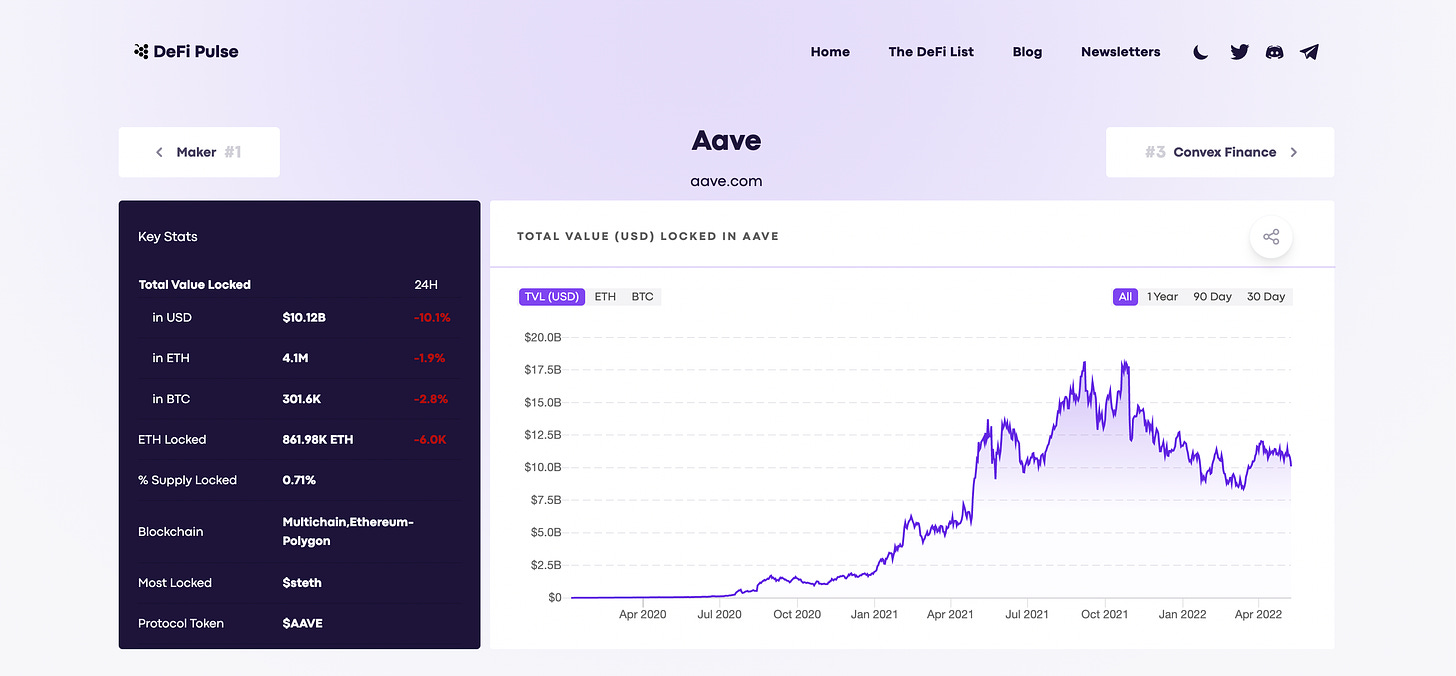
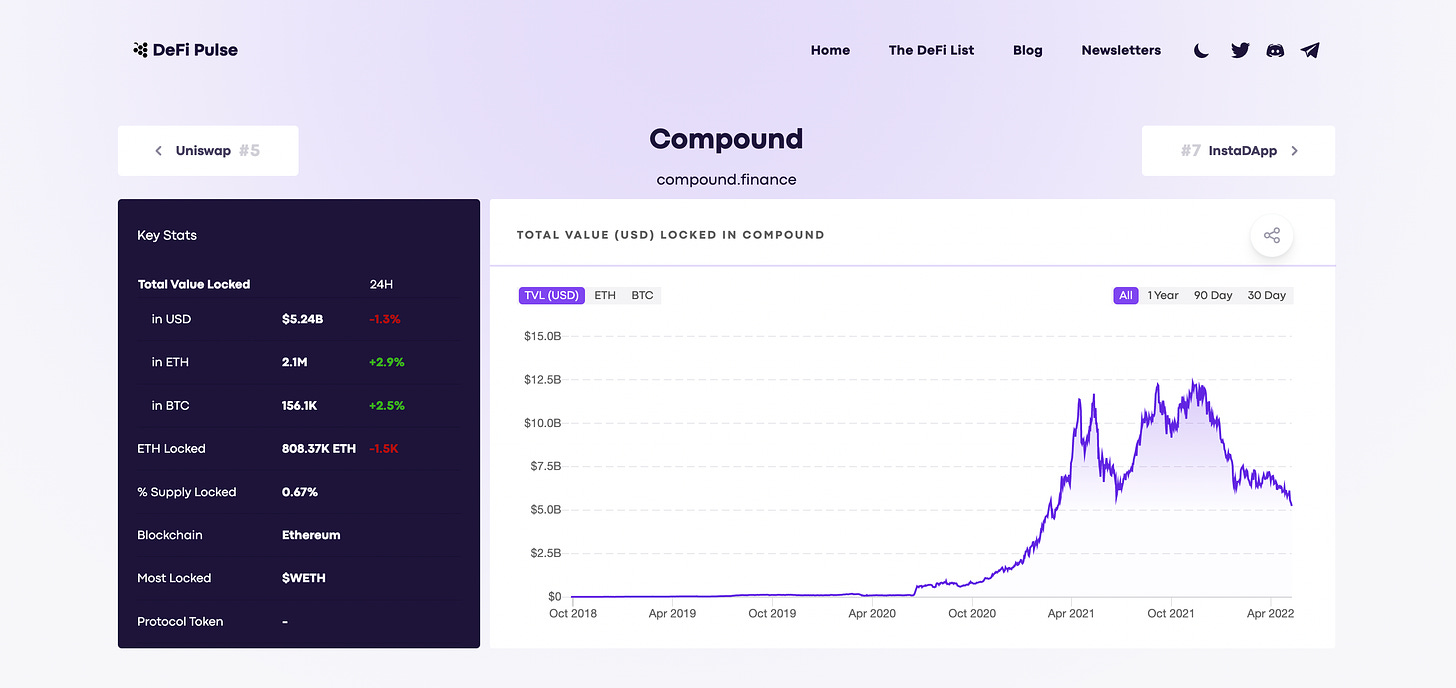
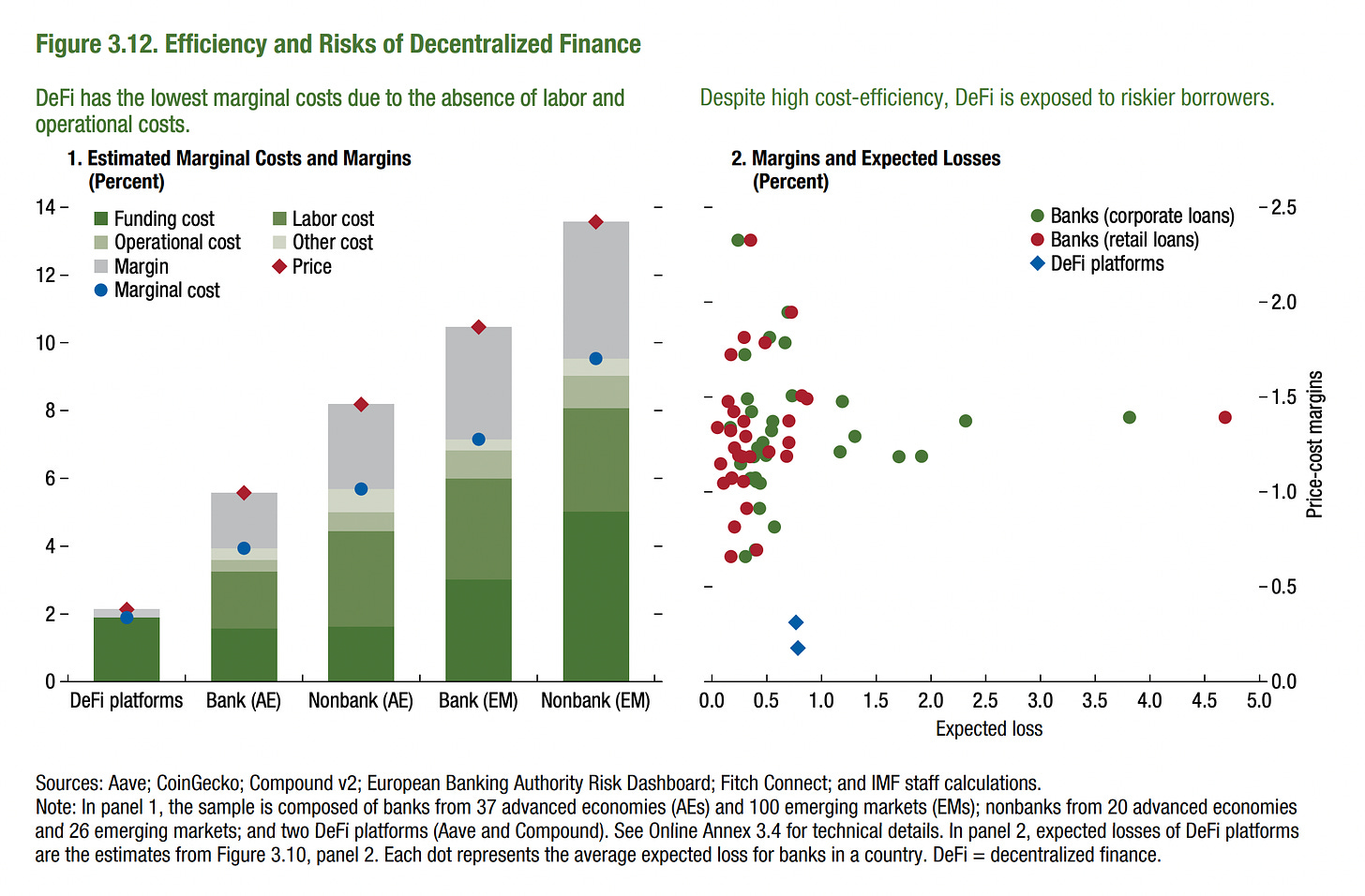
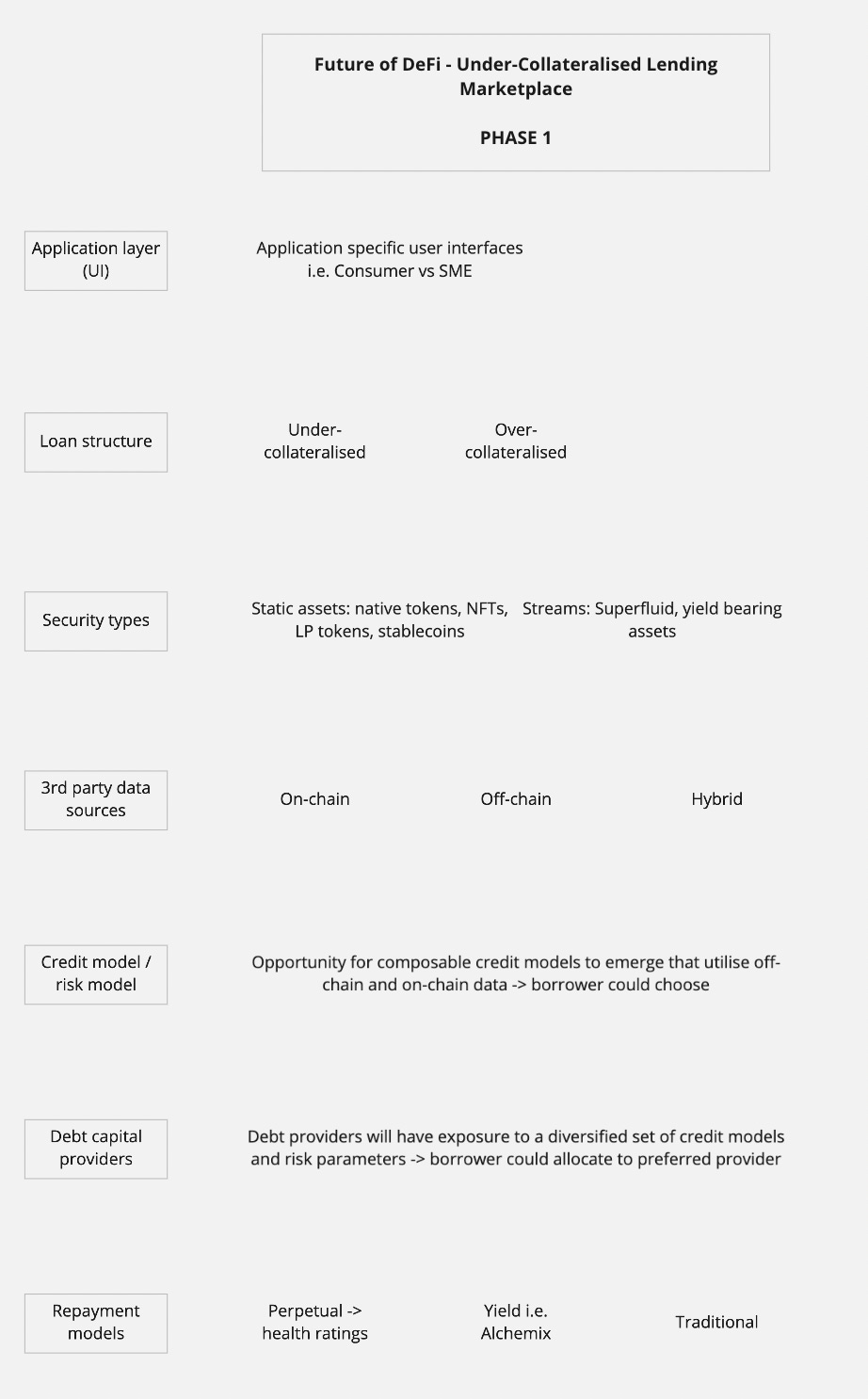
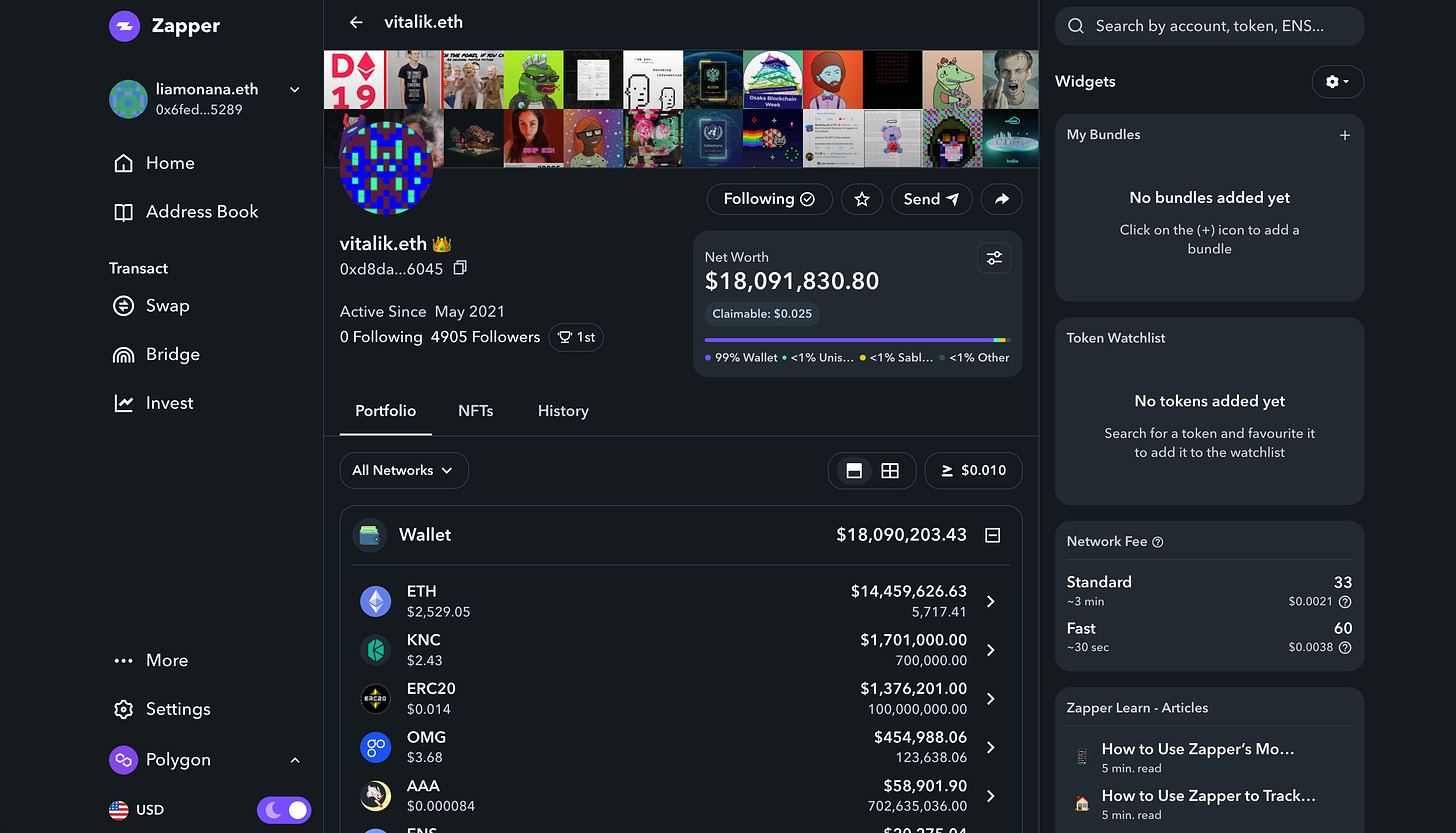
Great overview of the ecosystem and exactly what we’re enabling at Cred Protocol.
beautiful article